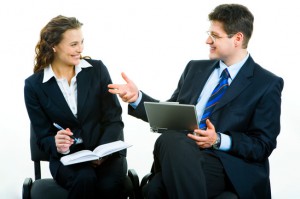Even before we have spoken, others make certain judgments about us by our body language.

To develop body language and create an excellent impression on others, join the Body Language Training Course offered by pdtraining in Sydney, Canberra, Melbourne and other cities in Australia.
We are aware of some of the characteristics of our body language, which means that there are certain things about our body language that we are not aware of. It may be our manner of walking, the way we use facial expressions in different situations, where we rest our hands, and so on. In order to improve our body language, we need to spot the bad or negative body language traits, and work to change them.
List of Negative Body Language Characteristics
Here is a list of the unwanted body language traits that you must get rid of to gain impressive body language. Identify the traits that you have so that you can work on each one of them.
- Using exaggerated gestures, such as waving of arms while speaking
- Making oneself small when in company (body language introverts use)
- Bad posture
- Avoiding eye contact
- Frowning, rolling eyes, yawning, squinting, shrinking or rubbing of nose, scowling, staring, or blinking fast
- Looking around when somebody is talking
- Standing too close, or too far, from the other person
- Fidgeting
- Crossing of hands and legs
- Playing with your hands, texting, or picking lint off your clothes while somebody is talking to you
- Faking a smile
- Leaning away from the other person talking when deep in conversation, or when the other person is leaning forward
- Tapping your fingers or foot
If you display any of the above characteristics, then you need to change your responses through practice. Even if your intent is not negative, your body language can lead to misunderstandings.
Ways to Alter Body Language
To create a favourable and positive impression through body language, you need to spend a little time everyday to alter bad body language characteristics. Here are some of the methods to change your body language responses:

1. Mirroring
In mirroring, you copy some of the body language traits of the other person to highlight the similarities between you and the other person, and your liking for the other person. For example, if the other person has leaned forward while talking to you, you may also do so. When the other person laughs, you may also laugh. It is important to do mirroring subtly and infrequently, so that it is not obvious.
Mirroring helps tremendously when interacting with people of different cultures. Without much knowledge of the different meaning of gestures and body language, it is safe to mirror the other person’s body language to avoid embarrassments and misunderstandings.
2. Practice
As you have been accustomed to your body language and usual responses, to break the habit you will need to practice an alternate response. For instance, if you frown when meeting strangers, you will need to consciously remind yourself to not frown when you are expected to meet someone new.
3. Learn from Others
To have a perfect body language, you can watch show hosts, presenters, or speakers to pick up clues on how to manage your nonverbal communications. Note how they stand, move, sit, and use facial expressions. When you are impressed by someone’s personality, ask yourself what you liked about their nonverbal communication. Adopt the best practices and, with time, you will see how you have built a stunning personality.
Pdtraining delivers 1000’s of professional development courses each year in Brisbane, Sydney, Parramatta, Melbourne, Adelaide, Canberra and Perth, so you can be assured your training will be delivered by a qualified and experienced trainer.
All public Body Language Training courses include am/pm tea, lunch, printed courseware and a certificate of completion. Customised courses are available upon request so please contact pdtraining on 1300 121 400 to learn more.
 1300 121 400
1300 121 400
 LOGIN
LOGIN

Comments are closed.